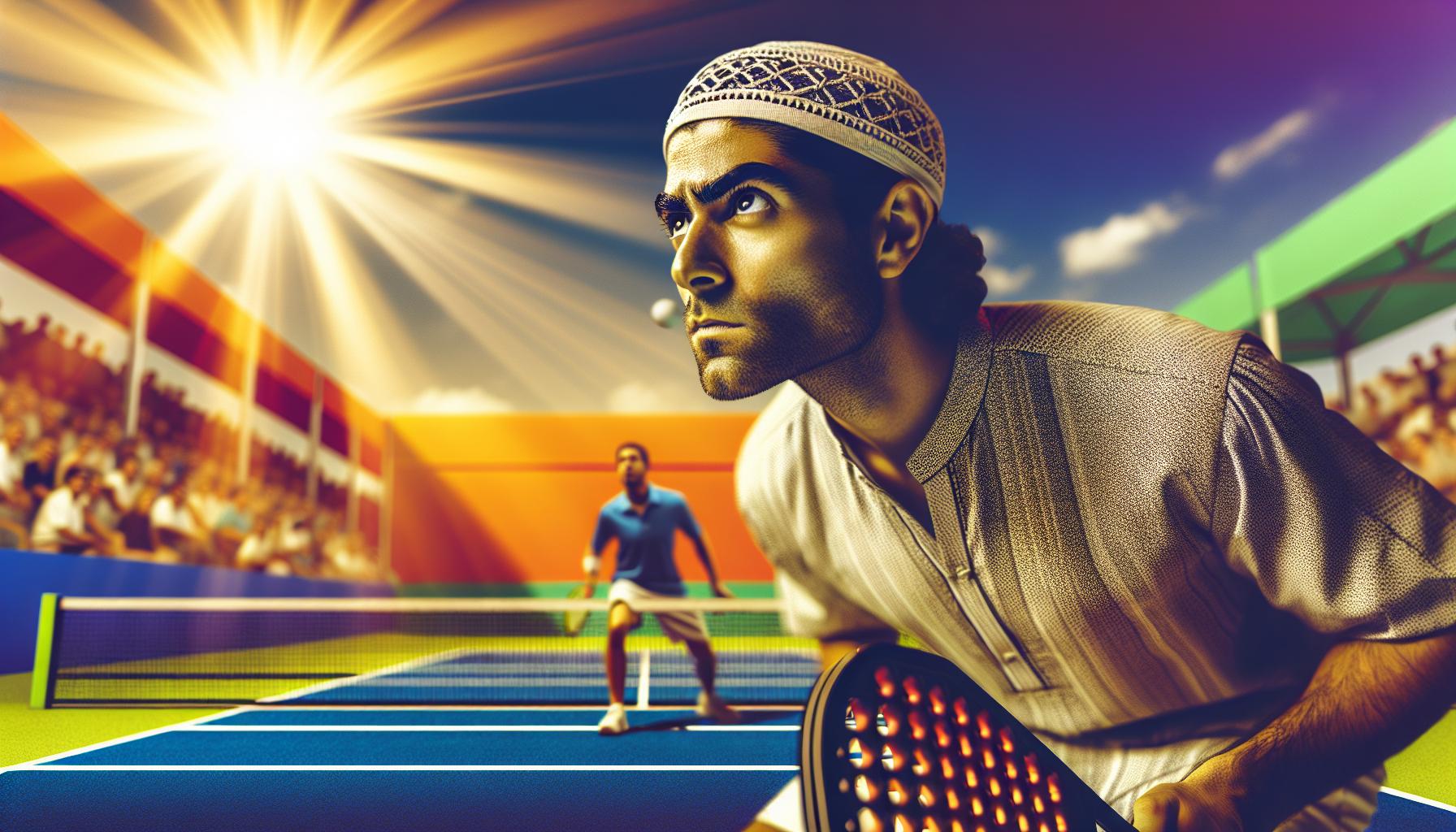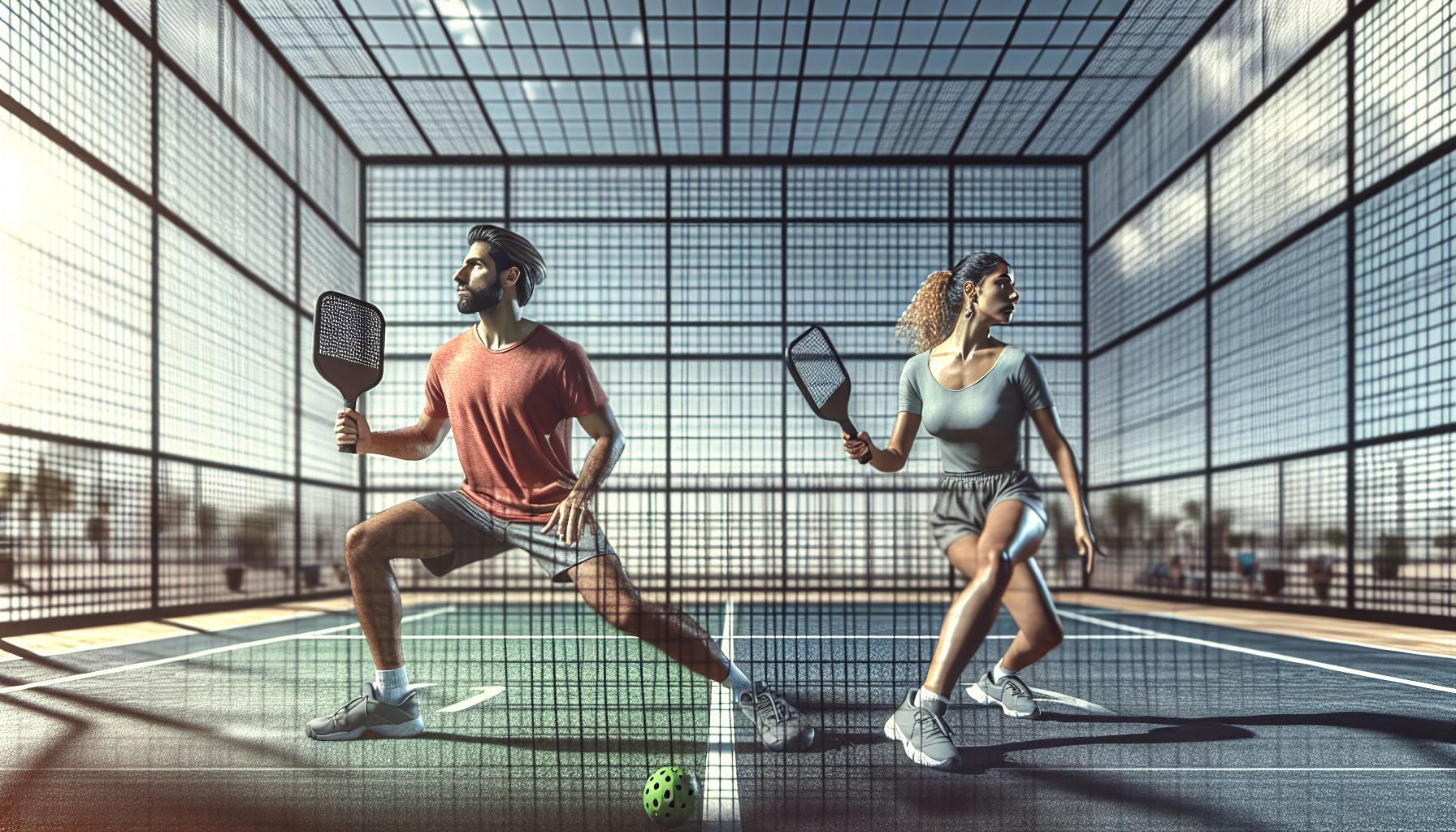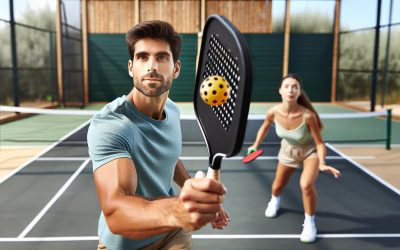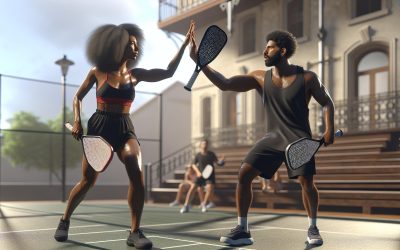Anticipating an opponent’s moves in pickleball can feel like trying to predict the weather—challenging but not impossible. It’s all about reading cues and understanding patterns, turning what seems like a guessing game into a strategic advantage. Mastering this skill can elevate your game from good to great, making each match not just a physical contest, but a mental duel as well.
Players who excel in this area often seem to be a step ahead, ready to counter their opponent’s every move. They’re not psychics; they’ve just honed their ability to anticipate through practice and observation. Let’s dive into how you can start doing the same, turning those split-second decisions into game-winning strategies.
Understanding the Game of Pickleball
Before diving into the specifics of anticipating an opponent’s moves, it’s crucial to have a solid grasp of pickleball fundamentals. Pickleball, a sport that merges elements of tennis, badminton, and table tennis, has rapidly grown in popularity due to its accessibility and the social atmosphere it fosters. Players use solid paddles to hit a perforated polymer ball, slightly larger than a tennis ball, over a net. The game can be played as singles or doubles, making it versatile for various player groups.
Court Awareness is the first step towards mastering anticipation in pickleball. The court is smaller than a tennis court, measuring 20×44 feet, divided into zones including the non-volley (kitchen) zone. Knowing each zone’s strategic importance allows players to predict where an opponent might direct the ball. For instance, shots near the baseline force opponents to the back, opening the front court for soft shots.
Rules and Scoring also play a key part in anticipation. Pickleball has unique rules, like the two-bounce rule, where the ball must bounce once on each side before volleys are allowed. This rule influences players’ positions and potential moves, especially after the serve. Scoring in pickleball is to 11, 15, or 21, and only the serving team can score points. This scoring system impacts players’ risk-taking behaviors, especially when the score is tight.
To excel in anticipating moves, players need to observe opponents’ Cues and Patterns. Body language, paddle position, and footwork often signal an opponent’s next move. High-level players mix up their shots to prevent predictability but still fall into patterns out of habit or preference. Recognizing these patterns enables players to position themselves strategically, making it easier to reach and return shots effectively.
Practice and Gameplay Experience significantly enhance anticipation skills. Engaging in various gameplay situations against different opponents exposes players to numerous styles and strategies. It’s not just about playing more games but also about reflecting on each game to identify what cues were missed or patterns unrecognized. Video analysis of gameplay can be an invaluable tool for improvement, allowing players to break down their performance and learn from both their mistakes and successes.
The Importance of Anticipating Opponent’s Moves

In the fast-paced game of pickleball, anticipating an opponent’s moves isn’t just a beneficial skill—it’s a critical strategy that can dramatically alter the course of play. By predicting where the ball will land, players can position themselves more effectively, conserve energy, and execute more precise shots. This foresight allows them to stay one step ahead, turning reactive gameplay into a proactive strategy.
A player adept at anticipation understands the game not only as a physical challenge but as a mental puzzle. Each opponent presents a unique set of patterns and habits that, once decoded, can reveal their likely next move. It’s like having a glimpse into the future, providing a competitive edge that can be the difference between winning and losing.
- Positional Advantage: Knowing the probable destination of the ball allows players to move into position earlier, giving them a better chance to control the point.
- Energy Efficiency: Moving with purpose, rather than scrambling reactively, conserves energy, which is crucial in long matches or tournaments.
- Strategic Gameplay: Predicting an opponent’s actions leads to smarter shot selections, forcing opponents into uncomfortable positions or capitalizing on their weaknesses.
Moreover, anticipation does not occur in a vacuum. It’s built on a foundation of sharp observation and a deep understanding of pickleball strategies. Watchful players notice subtle cues such as the opponent’s paddle angle, grip changes, and footwork. These cues, often overlooked by less experienced players, can telegraph the opponent’s next move. For instance, a slight shift in grip could indicate a smash, whereas a relaxed posture might suggest a softer shot.
Players also learn to read the game’s rhythm and anticipate shots based on the current flow of play. For example, after several fast exchanges at the net, an opponent might try a lob to break the pattern. Recognizing these moments requires not only keen observation but also experience and intuition.
To hone anticipation skills, players can:
- Study Opponents: Pay attention to patterns in opponents’ gameplay. Do they have preferred shots or strategies under pressure?
- Analyze Matches: Reviewing past games, especially those recorded on video, can reveal missed anticipation opportunities and opponent tendencies.
- Practice with Purpose: Drills that simulate various game scenarios can improve quick decision-making and the ability to read cues under pressure.
Reading Cues and Patterns

Anticipating an opponent’s moves in pickleball goes beyond simply keeping an eye on the ball. It involves reading cues and recognizing patterns in an opponent’s play. This section delves into the nuances of these strategies, equipping players with the insight needed to forecast their opponent’s next move effectively.
Observing Pre-Hit Motion
One key aspect of reading cues is observing an opponent’s pre-hit motion. Before striking the ball, players often subconsciously telegraph their intentions through their body language and paddle position. For instance, a player preparing for a powerful smash may pull their paddle back farther and tense up their shoulder muscles. On the other hand, a slight wrist flick could indicate an impending dink. Players adept at noting these subtleties can better position themselves and respond more swiftly.
Pattern Recognition
Over the course of a match, opponents may inadvertently fall into predictable behavior patterns. Skilled players take note of these routines, such as a tendency to favor backhand shots or to target specific areas of the court. This section of the game, often referred to as pattern recognition, allows players to anticipate shots even before their opponents hit the ball. By recognizing a pattern, a player can make an educated guess about the likely trajectory and speed of the ball, adjusting their position and strategy accordingly.
Key Patterns to Watch For Include:
- Repetitive shot selection: Some players repeatedly use the same shots under similar circumstances.
- Serving habits: Notice if the opponent favors serving to the forehand, backhand, or a specific area of the service box.
- Emotional responses: Players might default to certain shots or strategies when under pressure.
Adjusting to Disruptions
While recognizing and exploiting patterns is crucial, it’s equally important to adapt when an opponent changes their strategy. Flexibility in anticipating moves means not only reading present cues but also being ready for sudden shifts in an opponent’s playstyle. Players should remain vigilant and observant, ready to adjust their anticipations on the fly.
Enhancing Your Observation Skills

Observing an opponent’s behavior on the pickleball court isn’t just about watching the ball; it’s about picking up on the subtle cues and patterns that can predict their next move. Players who master the art of observation can often anticipate shots and strategies, giving them a significant edge during play.
Pay Attention to Body Language
One of the most reliable indicators of an opponent’s intentions is their body language. Before a shot, a player’s posture, grip, and eye movement can reveal a lot about what they’re planning. For instance, a player looking towards the far corner of the court might be preparing for a long shot, while a tightened grip could indicate a powerful smash. By keeping an eye on these details, players can position themselves more effectively to counter the coming move.
Analyze Service Patterns
Services in pickleball are crucial moments that set the tone for each point. Players should make a habit of analyzing their opponent’s service patterns. Are they favoring one side of the court over the other? Do they have a preference for a particular type of serve? Recognizing these patterns can help players anticipate where the serve will land, allowing them to prepare their return shot swiftly and strategically.
Recognize Shot Repetitions
All players, regardless of their skill level, tend to have preferred shots or strategies that they use more frequently. By observing these shot repetitions, opponents can anticipate what might come next. For instance, if a player notices that their opponent often follows a deep shot with a quick net drop, they can start moving towards the net as soon as they see the deep shot being prepared, ready to counter the drop.
Practice Active Observation
Practicing active observation can significantly enhance a player’s ability to pick up on subtle cues. This means not just watching the ball but paying attention to the opponent’s entire body and the racquet’s movement. It might seem overwhelming at first, but with practice, players can learn to quickly process this information and use it to their advantage.
Review Past Matches
Studying past matches, whether one’s own or those of potential opponents, is a great way to improve observation skills. By reviewing footage, players can identify patterns, strategies, and preferences without the pressure of responding in real-time. This preparation can make recognizing these cues easier during live play, allowing for quicker and more accurate anticipation.
Practicing Anticipation Techniques
In the quest to master the art of anticipation in pickleball, dedicating time to practice specific techniques is crucial. Players who actively work on anticipation techniques find themselves a step ahead, ready to meet the ball with confidence and precision. This section delves into various methods that aid in sharpening anticipation skills on the pickleball court.
Shadow Playing stands out as a powerful tool. It involves mimicking pickleball movements without the actual ball, focusing purely on footwork and position. Players visualize different scenarios, rehearsing their responses to imagined shots. This practice helps in building muscle memory for quick, intuitive reactions during real matches. It’s not just about physical readiness, but also mental. Envisioning potential moves from opponents allows players to prepare for a wide range of possibilities.
Drill-based Learning forms the core of honing anticipation skills. Specific drills designed to improve reaction time and adaptability can be invaluable. For instance, the ‘Random Feed Drill’, where a partner feeds balls in unpredictable patterns, forces players to stay alert and ready for anything. Another effective approach is the ‘Pattern Recognition Drill’, which involves repeating certain sequences of shots with a partner and then suddenly changing the pattern to test and improve anticipation.
Incorporating Technology has become an indispensable part of training in many sports, including pickleball. High-quality video analysis software enables players to study their own movements and compare them with top players. These tools offer insights into how professionals anticipate and react to shots, providing a benchmark for aspiring players. Additionally, virtual reality (VR) systems are emerging as a cutting-edge way to simulate match situations, offering a safe space to practice anticipation without the physical toll of a real game.
Mindfulness and Focus Training also play significant roles. Anticipating moves isn’t just about physical readiness; it’s also about being mentally prepared. Practices like meditation and visualization exercises can significantly improve a player’s focus and reaction times. By visualizing different game situations and their responses, players can better prepare their minds for the split-second decisions required on the court.
Turning Anticipation into Strategy
Anticipating an opponent’s moves in pickleball doesn’t just stop at understanding what they might do next; it extends into integrating this knowledge into one’s strategic gameplay. Players who excel at turning anticipation into strategy often find themselves a step ahead, not just physically but mentally as well. They’re not merely reacting to the game as it unfolds, but actively shaping the course of play with their foresight.
One fundamental way to incorporate anticipation into strategy is by adjusting positioning on the court. If a player can predict where their opponent’s shot is headed, they can move into the optimal position to return the shot not just with accuracy but with strategic intent. This could mean positioning oneself to send the ball back to areas where the opponent is weakest or least expects it. Moreover, skilled players use their anticipatory skills to set up for offensive shots, moving into positions that allow them to hit winning shots or apply pressure that leads to errors from the opponent.
Effective anticipation also involves adaptation. Opponents might change their play style or strategies mid-game, and those who anticipate these changes can swiftly adapt their tactics to maintain control of the game. This requires players to be observant and flexible, ready to adjust their strategies on the fly.
Advanced Tactics for Utilizing Anticipation
Beyond positioning and adaptation, there are several advanced strategies players can employ:
- Predictive Shot Selection: By recognizing patterns in an opponent’s play, players can anticipate the type of shot their opponent is likely to make. This foreknowledge allows for pre-emptive strategic decisions, aiming to counter these shots effectively.
- Forced Errors: Players can use their anticipation to force opponents into making errors. By playing shots that they know their opponents struggle with, they can increase their chances of scoring.
- Psychological Warfare: Sometimes, simply showing an opponent that you can anticipate their moves can be enough to throw them off their game. It creates pressure, making the opponent more likely to make mistakes or try risky shots that don’t pay off.
Enhancing Team Dynamics
In doubles play, anticipation becomes a powerful tool for team strategy. Teams that communicate effectively and understand each other’s cues can anticipate not just the opponents’ shots but also their partner’s movements. This synchrony allows for a seamless defense and a more aggressive offense. Practicing predetermined plays and discussing strategies beforehand can enhance this teamwork, making anticipation a shared asset.
Conclusion
Mastering the art of anticipation in pickleball transforms players from merely reacting to leading the game. It’s about more than just watching the ball; it’s about observing your opponent’s every move and being two steps ahead. With practice, patience, and a keen eye for detail, anyone can elevate their game by effectively predicting the opponent’s next move. Remember, it’s not just about quick reflexes but also about smart strategy and mental agility. So, take these insights, hit the court, and start turning your anticipations into victories. Whether you’re playing singles or doubles, the ability to anticipate can be your secret weapon. Let’s make every game your best game yet.














0 Comments